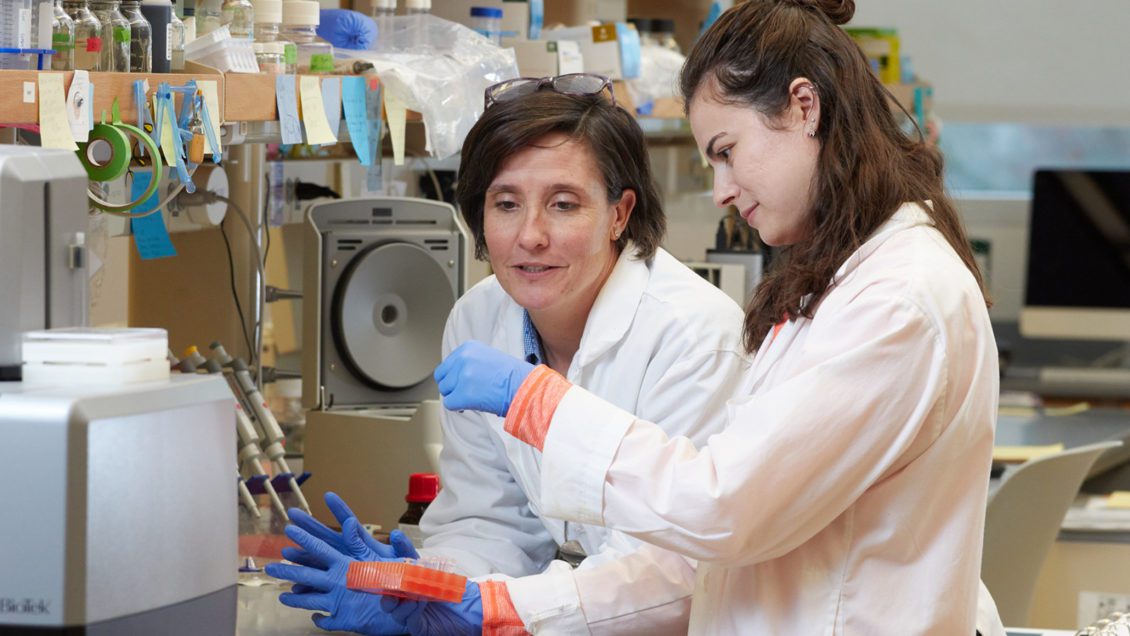CLEMSON, South Carolina — In the quest to develop more effective treatments for parasitic diseases like African sleeping sickness, Chagas disease and Leishmaniasis, scientists look for weaknesses in the organisms’ molecular machinery. These weaknesses can then be targeted with drug therapies designed to kill the parasites.

While they’ve made significant strides in recent years, scientists are still trying to unravel how the parasites’ complex molecular systems work. A team of Clemson University College of Science researchers recently contributed to that understanding by discovering the function of a specific protein in the three related parasites — Trypanosama brucei, Trypanosoma cruzi and Leishmania — which afflict millions worldwide and are sometimes fatal.
According to genetics and biochemistry associate professor Meredith Morris, the parasites share some of the same molecular makeup as humans, so drugs that can kill the parasites often do harm or have adverse side effects to the human hosts.
“We are always looking for ways that the parasites differ from us,” Morris said. “One of the main differences is that the parasites have a specialized cellular compartment or organelle that is absolutely essential to their survival.”
Morris and her team reported their results in mSphere on Feb. 19, 2020. The title of their paper is “Trypanosoma brucei Pex13.2 is an accessory peroxin that functions in the import of PTS2 proteins and localizes to subdomains of the glycosome.”
That parasite-specific organelle is called the glycosome, which plays a crucial role in cell processes, particularly energy metabolism. The glycosome organelle is surrounded by a single membrane, where several proteins reside. These proteins (Pex13.1, 13.2 and 14) import other proteins required for normal cell functioning.
In their study, Morris and her students used biochemical approaches to partially resolve the composition of those three glycosome proteins. In the process, they demonstrated that Pex13.2 is an integral glycosome membrane protein that interacts with Pex13.1 and Pex14, which was previously not known.

Utilizing the advanced microscopy technology in Clemson’s Light Imaging Facility, they also obtained very high-resolution images, and found that Pex13.2 exhibits a unique localization pattern that may be critical to its function.
“No one knew what Pex13.2 was doing, but our study adds to that understanding,” said Morris, a member of Clemson’s Eukaryotic Pathogens Innovation Center (EPIC). “Now we know that it plays a role in import of proteins and the division of the organelles.”
The team also silenced Pex13.2, which resulted in parasites with fewer, larger glycosomes. Without 13.2, the parasite couldn’t import glycosome proteins, resulting in the parasite’s death.
“Others have shown that when 13.2 is knocked out, the cell dies,” said Morris, noting that by fully understanding the organelle’s parts and functions, drug companies could someday design rational approaches to disrupting the system and killing the parasite.
In addition to Morris, the research team included lead author Logan Crowe (Ph.D. 2019), now a post-doctoral fellow at the University of Georgia; graduate student Christina Wilkinson; and Kathleen Nicholson (B.S. 2017), now a doctoral student at the University of Notre Dame.
The team credits the expertise and instrumentation of Clemson’s Light Imaging Facility for enabling them to obtain high-resolution images of single glycosomes, which was critical to this work.
END
This work was funded by a National Institutes of Health (NIH) Centers of Biomedical Research Excellence (COBRE) P20 grant P20GM109094. The content described here is solely the responsibility of the authors and does not necessarily represent the official views of NIH. Additional funding was provided by Clemson’s Creative Inquiry and Undergraduate Research program.
Get in touch and we will connect you with the author or another expert.
Or email us at news@clemson.edu

